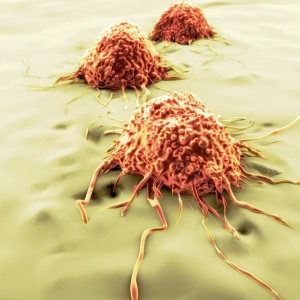 Researchers at Stanford University School of Medicine in California have recently revealed a new strategy for cancer detection via the use of blood-based biomarkers. The study is entitled “Detecting cancers through tumor-activatable minicircles that lead to a detectable blood biomarker” and was published in the journal Proceedings of the National Academy of Sciences.
Researchers at Stanford University School of Medicine in California have recently revealed a new strategy for cancer detection via the use of blood-based biomarkers. The study is entitled “Detecting cancers through tumor-activatable minicircles that lead to a detectable blood biomarker” and was published in the journal Proceedings of the National Academy of Sciences.
Early cancer detection can be a determinant for treatment efficacy. Blood-based cancer diagnosis is a highly attractive strategy; unfortunately, several of the blood-based biomarkers considered for cancer detection have failed, mostly due to their highly variable expression and production in both non-malignant and malignant tissues and the tumor’s own heterogeneity.
Researchers now suggest a new strategy for blood-based cancer biomarkers by artificially engineering tumor cells for the expression of a unique reporter. The team, led by Dr. Sanjiv “Sam” Gambhir, found a method to force any cancer type to generate a biomarker that can be detected in the blood. Experiments were conducted in mice, and biomarker detection was a strong indicator of cancer presence, as none of the rodent’s tissues (malignant or not) would normally produce such a marker. The molecule selected corresponds to a protein named secreted embryonic alkaline phosphatase (SEAP), which is naturally generated during the formation and development of human embryos but is not present in adults.
The team used SEAP DNA minicircles (tiny, artificial, single-stranded DNA rings of around 4,000 nucleotides encoding the SEAP gene) to induce cancer cells to produce the SEAP protein so that it could be detected in the bloodstream. DNA minicircles are advantageous because they are unable to replicate and randomly integrate into the host cell’s genome, and they do not have bacterial DNA, which by itself could induce a strong immune response.
All genes are preceded by a short DNA sequence called “promoter,” which acts like a switch controlling the on-and-off expression of the gene. In the SEAP DNA minicircle, the team inserted a promoter that usually controls the survivin gene, which in adults is only active (switched “on”) in cancer cells. In this system, the SEAP gene on the DNA minicircles should only be produced in cancer cells. The survivin promoter is well-studied and was found to be active in several cancers, such as skin cancer (melanoma), breast and lung, among others.
Researchers injected human melanoma-derived cells into immune-compromised mice (which lack the ability to develop a proper immune response) and found a considerable number of small tumors developed in the rodent’s body, especially in the lungs. Two weeks later, the animals were given the minicircles intravenously and SEAP levels were measured 1, 3, 7, 11 and 14 days later in the blood. No SEAP was detected in the blood prior to the minicircles injection; 48 hours post-injection, SEAP was found in tumor-bearing mice but not in the blood of control tumor-free animals, showing a robust ability to differentiate tumors from tumor-free subjects. SEAP’s signal declined in strength after 72 hours post-injection, becoming undetectable within two weeks.
“We want to translate this strategy into humans, so we’ve set it up in a way that’s most likely to be effective, safe and convenient,” said Dr. Gambhir in a news release. Concerning the intravenous delivery approach of the minicircles, Dr. Gambhir believes that it is possible to adapt it to an oral delivery through a pill. “We haven’t got it down to a pill yet, but the oral delivery part of this is likely a solvable problem — only a few years off, not five or 10 years off.”
The team believes that this technique can be further explored, and that in the future second genes can be added to the mini circles that can tag cancer cells, helping to identify the location of the tumor through imaging or add eventual therapeutic genes that can provide physicians with a tool for both diagnosing and treating cancer. This system could be particularly useful for patients with high risk of tumor recurrence and also for screening tests in the general population.


